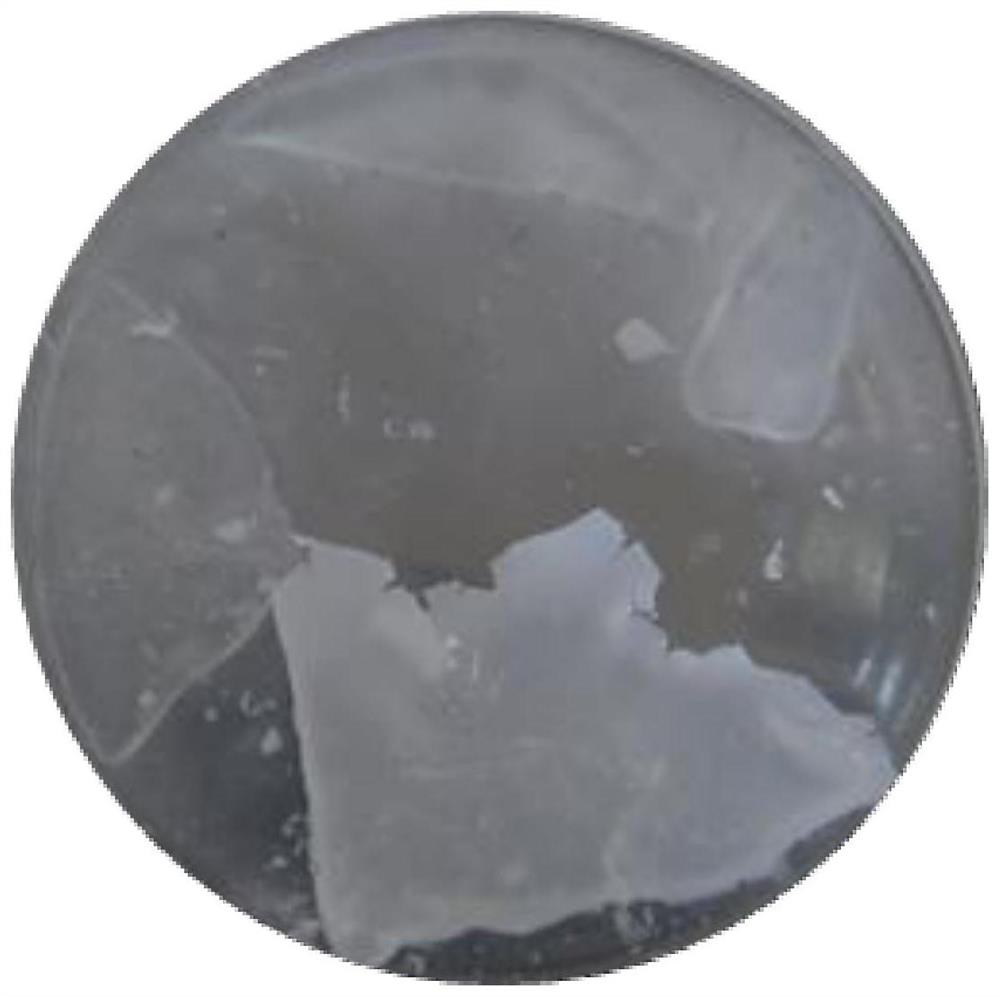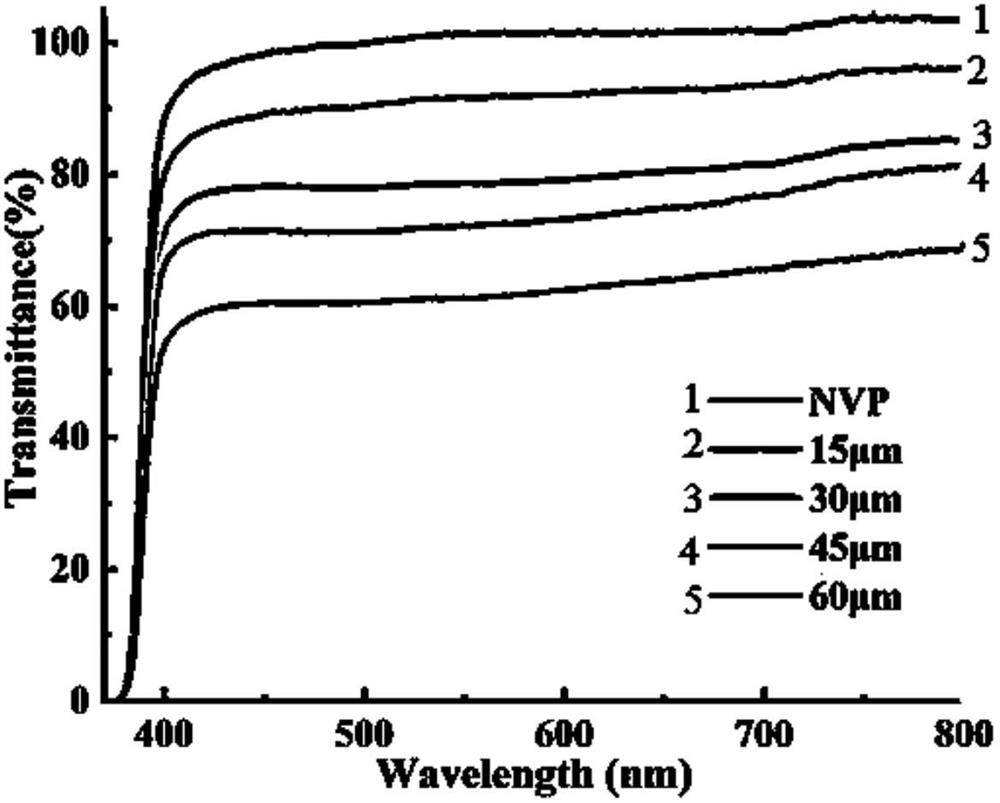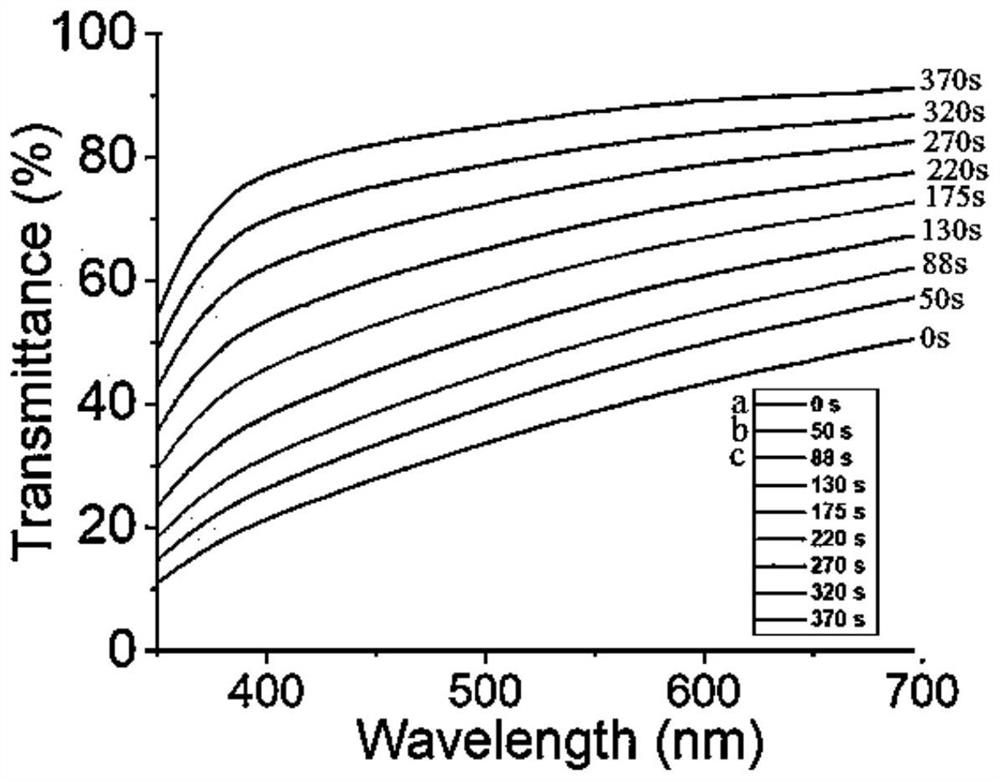Dynamic solvent-responsive nanofiber-based flexible transparent composite film and its preparation method
A nanofiber membrane, nanofiber technology, applied in fiber processing, fiber type, textile and papermaking, etc., to achieve the effect of simple process, suitable strength and wide application
- Summary
- Abstract
- Description
- Claims
- Application Information
AI Technical Summary
Problems solved by technology
Method used
Image
Examples
Embodiment 1
[0051]a) Add the NVP monomer solution, the initiator 2,2-dimethoxy-2-phenylacetophenone, and the crosslinking agent N,N-methylenebisacrylamide in a ratio of 500:1:1 In a 25mL beaker, stir well with a glass rod to obtain a uniformly mixed NVP polymerization solution, then cut the nanofiber film with a thickness of 60 μm into a size of 6cm×6cm and put it in the NVP polymerization solution for full infiltration.
[0052] b) Evenly mix polydimethylsiloxane (PDMS) and curing agent in a ratio of 10:1, then pour it into a petri dish with a diameter of 10 cm, and transfer it to an oven at a certain temperature for curing after vacuum degassing After 2 hours, a transparent and elastic PDMS substrate was formed, which was lifted for later use.
[0053] c) Take out the fully infiltrated nanofiber membrane from the NVP polymerization solution and place it on the PDMS elastic substrate, put the two together in a vacuum oven to eliminate the air bubbles between the interfaces, and make the ...
Embodiment 2
[0056] a) Add the NVP monomer solution, the initiator 2,2-dimethoxy-2-phenylacetophenone, and the crosslinking agent N,N-methylenebisacrylamide in a ratio of 250:1:1 to In a 25mL beaker, stir well with a glass rod to obtain a uniformly mixed NVP polymerization solution, then cut the nanofiber film with a thickness of 60 μm into a size of 6cm×6cm and put it in the NVP polymerization solution for full infiltration.
[0057] b) Evenly mix polydimethylsiloxane (PDMS) and curing agent in a ratio of 10:1, then pour it into a petri dish with a diameter of 10 cm, and transfer it to an oven at a certain temperature for curing after vacuum degassing After 2 hours, a transparent and elastic PDMS substrate was formed, which was lifted for later use.
[0058] c) Take out the fully infiltrated nanofiber membrane from the NVP polymerization solution and place it on the PDMS elastic substrate, put the two together in a vacuum oven to eliminate the air bubbles between the interfaces, and make ...
Embodiment 3
[0061] a) Add the NVP monomer solution, the initiator 2,2-dimethoxy-2-phenylacetophenone, and the crosslinking agent N,N-methylenebisacrylamide in a ratio of 100:1:1 to In a 25mL beaker, stir well with a glass rod to obtain a uniformly mixed NVP polymerization solution, then cut the nanofiber film with a thickness of 60 μm into a size of 6cm×6cm and put it in the NVP polymerization solution for full infiltration.
[0062] b) Evenly mix polydimethylsiloxane (PDMS) and curing agent in a ratio of 10:1, then pour it into a petri dish with a diameter of 10 cm, and transfer it to an oven at a certain temperature for curing after vacuum degassing After 2 hours, a transparent and elastic PDMS substrate was formed, which was lifted for later use.
[0063] c) Take out the fully infiltrated nanofiber membrane from the NVP polymerization solution and place it on the PDMS elastic substrate, put the two together in a vacuum oven to eliminate the air bubbles between the interfaces, and make ...
PUM
| Property | Measurement | Unit |
|---|---|---|
| diameter | aaaaa | aaaaa |
| thickness | aaaaa | aaaaa |
| diameter | aaaaa | aaaaa |
Abstract
Description
Claims
Application Information
 Login to View More
Login to View More - R&D
- Intellectual Property
- Life Sciences
- Materials
- Tech Scout
- Unparalleled Data Quality
- Higher Quality Content
- 60% Fewer Hallucinations
Browse by: Latest US Patents, China's latest patents, Technical Efficacy Thesaurus, Application Domain, Technology Topic, Popular Technical Reports.
© 2025 PatSnap. All rights reserved.Legal|Privacy policy|Modern Slavery Act Transparency Statement|Sitemap|About US| Contact US: help@patsnap.com



